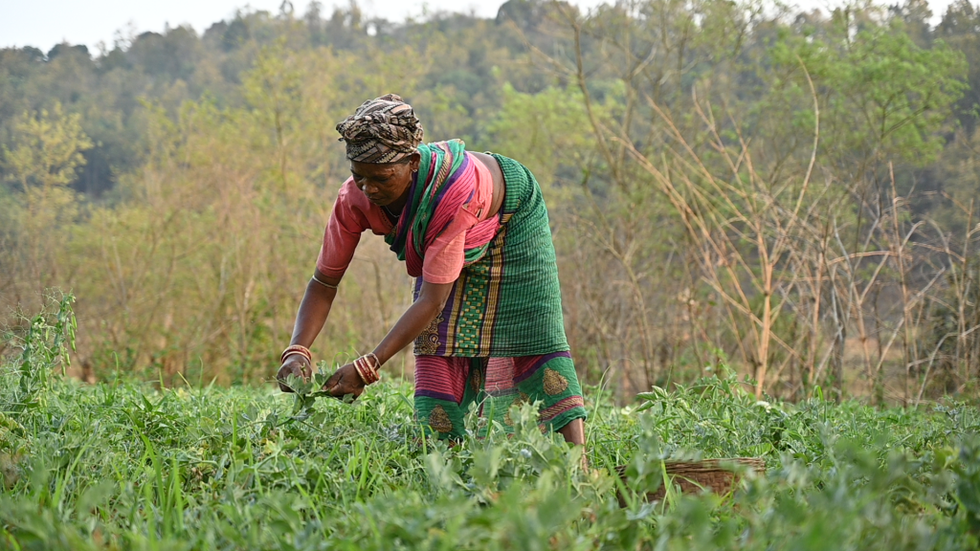The residual moisture left in the soil post-rice harvest serves as a valuable resource for cultivating short-duration pulses and oilseed crops, promoting sustainable crop intensification and enhancing land productivity.
Utilizing Rice Fallow Land
Rice fallow, the uncropped land left after rice harvest, poses a significant agricultural challenge in eastern India. However, by introducing suitable technologies and crops tailored to the landscape, this fallow land can be transformed into an opportunity, contributing to increased farm income and ensuring food security.
Agricultural Landscape of Odisha
Odisha boasts a cultivable area of over 6.18 million hectares spread across 10 agro-climatic zones. Rice cultivation dominates the agricultural landscape, meeting a substantial portion of the state’s food requirements, with pulse crops covering a significant area during the Rabi season.
Challenges in Rabi Season Crop Production
Limited irrigation facilities during the Rabi season hinder the expansion of crop production beyond rice cultivation, particularly in coastal areas where traditional practices like Paira cropping have declined due to climate change.
Utilization of Rice Fallow Land
Approximately 1.6 million hectares of land in Odisha remain uncultivated after rice harvest, presenting an opportunity for utilizing residual moisture for cultivating short-duration pulse and oilseed crops during the Rabi season.
Government Initiatives
The Odisha government, recognizing the potential of rice fallow management, aims to scale up initiatives to enhance farmers’ income and promote sustainable agricultural practices.
Success and Scaling Up
Following successful implementation during the 2022-23 Rabi season, the rice fallow management project was scaled up in the subsequent year, covering 382,000 hectares across all districts of the state.
Objectives and Crop Selection
Key objectives include optimal utilization of residual soil moisture, increasing cropping intensity, and promoting the production of pulses and oilseeds. Eight crops have been targeted under the scheme, with a focus on local varieties showing promising results.
Farmers’ Testimonials
Farmers have reported positive outcomes, such as increased income and reduced dependency on external sources for certain crops, highlighting the practical benefits of the initiative.
Eco-Friendly Agricultural Practices
The success of the rice fallow initiative is attributed to the incorporation of eco-friendly inputs and pest management strategies, reducing reliance on chemical pesticides and promoting natural pest control.
Advisory Services and Feedback Mechanisms
Farmers receive crop-specific advisory services through state-of-the-art call centers, ensuring timely guidance and addressing farmers’ concerns through feedback mechanisms.
Addressing Soil Acidity
To address soil acidity, a major impediment to non-paddy crop productivity, the program includes “Acid Soil Management,” providing dolomitic limestone to farmers for soil amelioration.
National Significance
Rice fallow management in Odisha stands as the largest regenerative crop demonstration activity in the country, setting a precedent for sustainable crop management practices nationwide.
Conclusion and Future Directions
The Odisha government emphasizes integrating climate resilience and nutrition sensitivity into agricultural programs, reflecting a commitment to sustainable and inclusive agricultural development.
Multiple-Choice Questions (MCQs):
- What resource is efficiently utilized in rice fallow management for cultivating short-duration pulses and oilseed crops?
a) Irrigation water
b) Residual soil moisture
c) Chemical fertilizers
d) Agricultural machinery
Answer: b) Residual soil moisture - What is the primary agricultural challenge posed by rice fallow in eastern India?
a) Soil erosion
b) Weed infestation
c) Uncultivated land
d) Pest outbreaks
Answer: c) Uncultivated land - How much of Odisha’s land is classified as rice fallow after the Kharif season?
a) 1.6 million hectares
b) 3.18 million hectares
c) 10 agro-climatic zones
d) 60% of the total sown area
Answer: a) 1.6 million hectares - Which initiative aims to address soil acidity as part of rice fallow management in Odisha?
a) Crop diversification
b) Integrated farming
c) Acid Soil Management
d) Dolomitic limestone provision
Answer: c) Acid Soil Management - What is the significance of rice fallow management in Odisha on a national scale?
a) It promotes industrial agriculture
b) It sets a precedent for sustainable crop management practices
c) It emphasizes traditional farming techniques
d) It focuses on monoculture cropping systems
Answer: b) It sets a precedent for sustainable crop management practices
